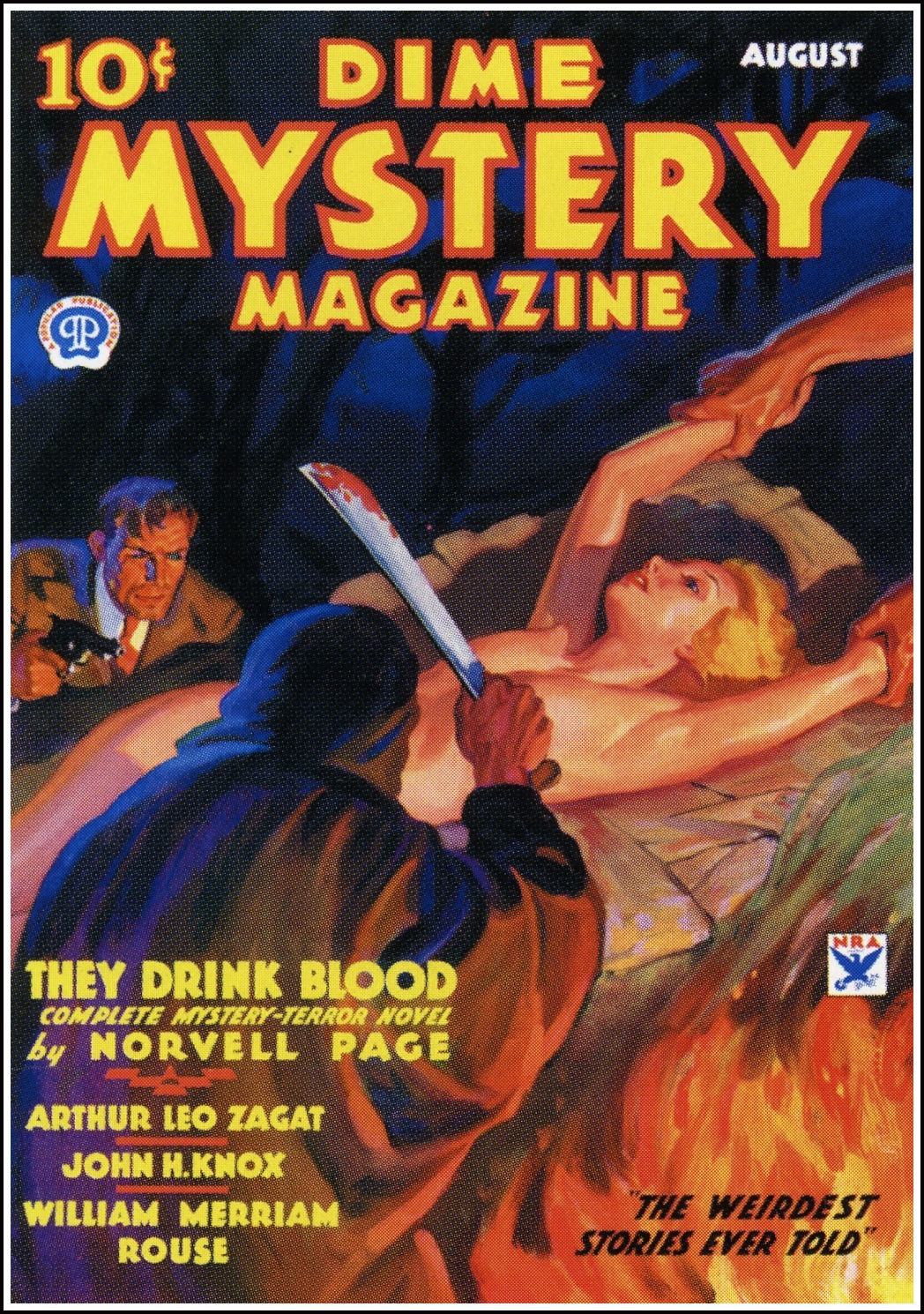|
Eerie Stories
''Eerie Stories'' was an American weird menace pulp magazine Pulp magazines (also referred to as "the pulps") were inexpensive fiction magazines that were published from 1896 to the late 1950s. The term "pulp" derives from the cheap wood pulp paper on which the magazines were printed. In contrast, magazine ... that published one issue in 1937.Ashley (1985), pp. 202-203. The publisher had failed with another weird menace pulp, '' Ace Mystery'', the year before, and pulp historian Robert K. Jones comments that ''Eerie Stories'' was "even feebler".Jones (1975), pp. 130-131. All twelve stories were written under house names; one, "Mate of the Beast" by Leon Dupont, was a reprint from ''Ace Mystery'' with a new title, and there may have been other reprints.Ashley (1985), pp. 202-203. In the opinion of pulp historian Michael L. Cook, the stories "really had no redeeming value and were even poor entertainment". The tagline was "Startling Adventures in Chilling Horror", but in Jones' ... [...More Info...] [...Related Items...] OR: [Wikipedia] [Google] [Baidu] |
Weird Menace
Weird menace is a subgenre of horror fiction and detective fiction that was popular in the pulp magazines of the 1930s and early 1940s. The weird menace pulps, also known as shudder pulps, generally featured stories in which the hero was pitted against sadistic villains, with graphic scenes of torture and brutality. History In the early 1930s, detective pulps like '' Detective-Dragnet'', ''All Detective'', ''Dime Detective'', and the short-lived ''Strange Detective Stories'', began to favor detective stories with weird, eerie, or menacing elements. Eventually, the two distinct genre variations branched into separate magazines; the detective magazines returned to stories predominantly featuring detection or action, while the eerie mysteries found their own home in the weird menace titles. Some magazines, for instance ''Ten Detective Aces'' (the successor to ''Detective-Dragnet''), continued to host both genre variations. Popularity and demise The first weird menace title was ''Dim ... [...More Info...] [...Related Items...] OR: [Wikipedia] [Google] [Baidu] |
Pulp Magazine
Pulp magazines (also referred to as "the pulps") were inexpensive fiction magazines that were published from 1896 to the late 1950s. The term "pulp" derives from the cheap wood pulp paper on which the magazines were printed. In contrast, magazines printed on higher-quality paper were called "glossies" or "slicks". The typical pulp magazine had 128 pages; it was wide by high, and thick, with ragged, untrimmed edges. The pulps gave rise to the term pulp fiction in reference to run-of-the-mill, low-quality literature. Pulps were the successors to the penny dreadfuls, dime novels, and short-fiction magazines of the 19th century. Although many respected writers wrote for pulps, the magazines were best known for their lurid, exploitative, and sensational subject matter, even though this was but a small part of what existed in the pulps. Successors of pulps include paperback books, digest magazines, and men's adventure magazines. Modern superhero comic books are sometimes considere ... [...More Info...] [...Related Items...] OR: [Wikipedia] [Google] [Baidu] |
Ace Mystery
''Ace Mystery'' was a weird menace pulp magazine which published three issues starting in 1936, followed by two more under the title ''Detective Romances''. Ace Mystery was published by Periodical House and edited by Harry Widmer. Writers who appeared in the magazine included Frederick C. Davis, who wrote all three lead novels, Hugh B. Cave, and Robert C. Blackmon; magazine historian Michael Cook comments that these were capable writers, but the rest of the magazine was too low-quality to succeed. Some of the stories were fantasy rather than weird menace -- for example, one story was about a sculptor who could shrink dead bodies. Science fiction historian A historian is a person who studies and writes about the past and is regarded as an authority on it. Historians are concerned with the continuous, methodical narrative and research of past events as relating to the human race; as well as the stu ... Mike Ashley is more positive than Cook, describing the magazine as ... [...More Info...] [...Related Items...] OR: [Wikipedia] [Google] [Baidu] |
Pulp Magazines
Pulp magazines (also referred to as "the pulps") were inexpensive fiction magazines that were published from 1896 to the late 1950s. The term "pulp" derives from the cheap wood pulp paper on which the magazines were printed. In contrast, magazines printed on higher-quality paper were called "glossies" or "slicks". The typical pulp magazine had 128 pages; it was wide by high, and thick, with ragged, untrimmed edges. The pulps gave rise to the term pulp fiction in reference to run-of-the-mill, low-quality literature. Pulps were the successors to the penny dreadfuls, dime novels, and short-fiction magazines of the 19th century. Although many respected writers wrote for pulps, the magazines were best known for their lurid, exploitative, and sensational subject matter, even though this was but a small part of what existed in the pulps. Successors of pulps include paperback books, digest magazines, and men's adventure magazines. Modern superhero comic books are sometimes considered ... [...More Info...] [...Related Items...] OR: [Wikipedia] [Google] [Baidu] |
Magazines Established In 1937
A magazine is a periodical publication, generally published on a regular schedule (often weekly or monthly), containing a variety of content. They are generally financed by advertising, purchase price, prepaid subscriptions, or by a combination of the three. Definition In the technical sense a ''journal'' has continuous pagination throughout a volume. Thus ''Business Week'', which starts each issue anew with page one, is a magazine, but the '' Journal of Business Communication'', which continues the same sequence of pagination throughout the coterminous year, is a journal. Some professional or trade publications are also peer-reviewed, for example the '' Journal of Accountancy''. Non-peer-reviewed academic or professional publications are generally ''professional magazines''. That a publication calls itself a ''journal'' does not make it a journal in the technical sense; ''The Wall Street Journal'' is actually a newspaper. Etymology The word "magazine" derives from Arabic , th ... [...More Info...] [...Related Items...] OR: [Wikipedia] [Google] [Baidu] |




